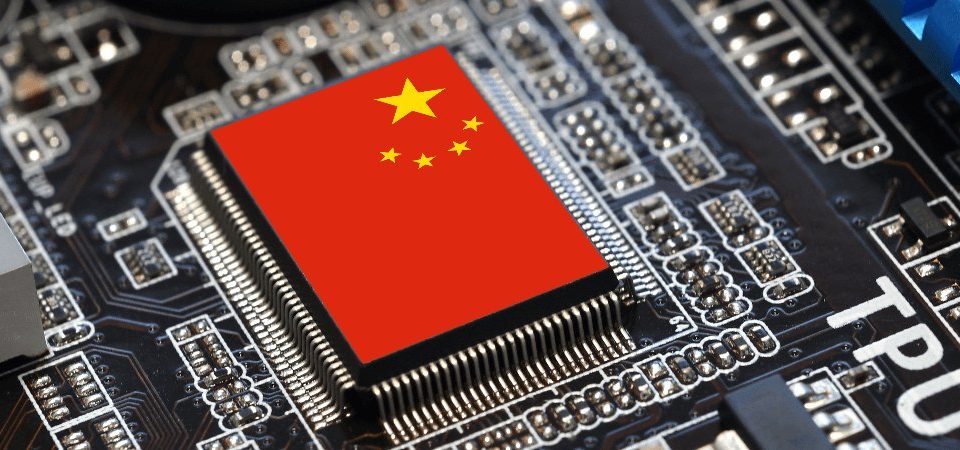
China has achieved a major chip breakthrough after two years of setbacks. Reports from multiple sources found that Semiconductor Manufacturing International Corporation (SMIC) is now capable of producing 5nm semiconductors.
According to the report, Semiconductor Manufacturing International Corporation (SMIC) has now demonstrated the capability to produce 5nm semiconductors. There is also increasing evidence that SMIC has not only reached the 5nm mark but may have even exceeded it by developing an advanced chip for Huawei. If confirmed, this achievement places China in the same league as Intel, marking a significant milestone for SMIC.
“Huawei’s HiSilicon’s post-Ascend 910B AI chip is expected to offer higher performance, partially due to its new process node — the next-generation AI processor purportedly uses SMIC’s N+2 process technology (which some believe is a 5nm-class node). This marks the second such Huawei effort that’s thought to employ the sanctions-defying SMIC 5nm node — the company recently listed a laptop with an advanced chip with 5nm manufacturing tech, a feat previously thought impossible due to U.S sanctions,” TomsHardware reported, citing TrendForce.
This is not the first time China has shocked the world. Back in September, Huawei made headlines after mass-producing the HiSilicon Kirin 9000S processor using its second-gen 7nm process technology—a feat initially deemed impossible. However, the latest revelation about their purported shift to 5nm is even more remarkable.
In November, Huawei took the spotlight again with the launch of its Mate 60 Pro phone, featuring a 5G chip powered by SMIC’s 7nm chips. This development is indicative of China’s swift progress in a nationwide effort to circumvent US attempts to curtail its rise. The announcement serves as a testament to the challenges posed by the United States’ approach of technology and economic protectionism in its efforts to restrain rival nations.
Meanwhile, the recent report adds that SMIC’s production of 5nm chips is achieved solely using DUV machines, a feat unmatched by any other company or nation. This unconventional approach contrasts with the more advanced EUV method commonly employed elsewhere, and it appears to be a strategic response to the US sanctions imposed on China.
Supporting this claim, the report cites Huawei’s recent introduction of a new laptop featuring a processor purportedly built on a 5nm process. This suggests that Chinese foundries, such as SMIC, may possess the capability to produce advanced chips, challenging expectations shaped by US sanctions.
However, achieving the 5nm breakthrough does come at a cost for SMIC. Some industry experts suggest that using DUV equipment could potentially be more expensive for the company. A former executive from TSMC noted that while it’s feasible for both Huawei and SMIC to produce a 5nm System-on-Chip (SoC), it may come with added costs given the current machinery in use.
“Since the U.S. has barred firms such as Dutch-based ASML from supplying next-generation EUV machinery to China to stifle the competition, SMIC has little choice but to proceed with the 5nm process using DUV equipment. We have reported that a former TSMC executive has stated that it is possible for both Huawei and SMIC to make a 5nm SoC, but with the existing machinery, it will be time-consuming, will produce a lower yield, and will be highly expensive.” Wccf wrote.
The 5nm breakthrough is a significant stride for both SMIC and Huawei amid ongoing geopolitical tensions and technological competition. With the escalating demand for advanced chips, this achievement positions Chinese tech giants favorably in the global market, reducing their reliance on US suppliers.
If confirmed, this potential breakthrough could have far-reaching implications for the global semiconductor industry, which is currently dominated by companies like TSMC and Samsung. The 5nm technology’s notable performance and efficiency improvements over its predecessors make it a crucial element for cutting-edge electronics.
- SEO Powered Content & PR Distribution. Get Amplified Today.
- PlatoData.Network Vertical Generative Ai. Empower Yourself. Access Here.
- PlatoAiStream. Web3 Intelligence. Knowledge Amplified. Access Here.
- PlatoESG. Carbon, CleanTech, Energy, Environment, Solar, Waste Management. Access Here.
- PlatoHealth. Biotech and Clinical Trials Intelligence. Access Here.
- Source: https://techstartups.com/2023/12/12/china-achieves-5nm-chip-breakthrough-bypassing-us-sanctions/
- :has
- :is
- :not
- 11
- 12
- 5G
- 60
- a
- About
- achieved
- achievement
- Achieves
- achieving
- added
- Adds
- advanced
- After
- again
- AI
- also
- Amid
- an
- and
- Announcement
- any
- appears
- approach
- AS
- At
- Attempts
- back
- BE
- believe
- both
- breakthrough
- built
- but
- by
- capability
- capable
- challenges
- challenging
- China
- Chinas
- chinese
- chip
- Chips
- choice
- circumvent
- citing
- claim
- come
- commonly
- Companies
- company
- competition
- CONFIRMED
- contrasts
- CORPORATION
- Cost
- Costs
- could
- crucial
- Current
- Currently
- cutting-edge
- deemed
- defying
- Demand
- demonstrated
- developing
- Development
- does
- dominated
- due
- Economic
- efficiency
- effort
- efforts
- Electronics
- element
- elsewhere
- employed
- equipment
- Even
- evidence
- exceeded
- executive
- existing
- expectations
- expected
- expensive
- experts
- far-reaching
- feasible
- feat
- Featuring
- firms
- First
- first time
- For
- Former
- found
- from
- geopolitical
- giants
- given
- Global
- global market
- Have
- Headlines
- higher
- highly
- However
- HTTPS
- Huawei
- if
- implications
- imposed
- impossible
- improvements
- in
- increasing
- indicative
- industry
- industry experts
- initially
- Intel
- International
- Introduction
- IT
- ITS
- jpg
- laptop
- latest
- League
- like
- Listed
- little
- lower
- machinery
- Machines
- made
- major
- make
- manufacturing
- mark
- Market
- marking
- mate
- May..
- method
- milestone
- more
- nation
- Nations
- Nationwide
- New
- next-generation
- node
- notable
- noted
- November
- now
- of
- offer
- on
- ongoing
- only
- or
- Other
- over
- performance
- Places
- plato
- Plato Data Intelligence
- PlatoData
- posed
- positions
- possess
- possible
- potential
- powered
- previously
- Pro
- proceed
- process
- Processor
- produce
- producing
- Production
- Progress
- reached
- recent
- recently
- reducing
- reliance
- remarkable
- report
- Reported
- Reports
- response
- revelation
- Rise
- Rival
- s
- same
- Samsung
- Sanctions
- Second
- semiconductor
- Semiconductors
- September
- serves
- Setbacks
- shaped
- shift
- shocked
- significant
- solely
- some
- Spotlight
- stated
- stifle
- Strategic
- stride
- such
- suggest
- Suggests
- suppliers
- supplying
- SWIFT
- tech
- tech giants
- technological
- Technology
- tensions
- testament
- that
- The
- the world
- their
- There.
- this
- thought
- time
- time-consuming
- to
- took
- Tsmc
- two
- u.s.
- unconventional
- United
- unmatched
- us
- use
- uses
- using
- we
- which
- while
- will
- with
- world
- years
- Yield
- zephyrnet












